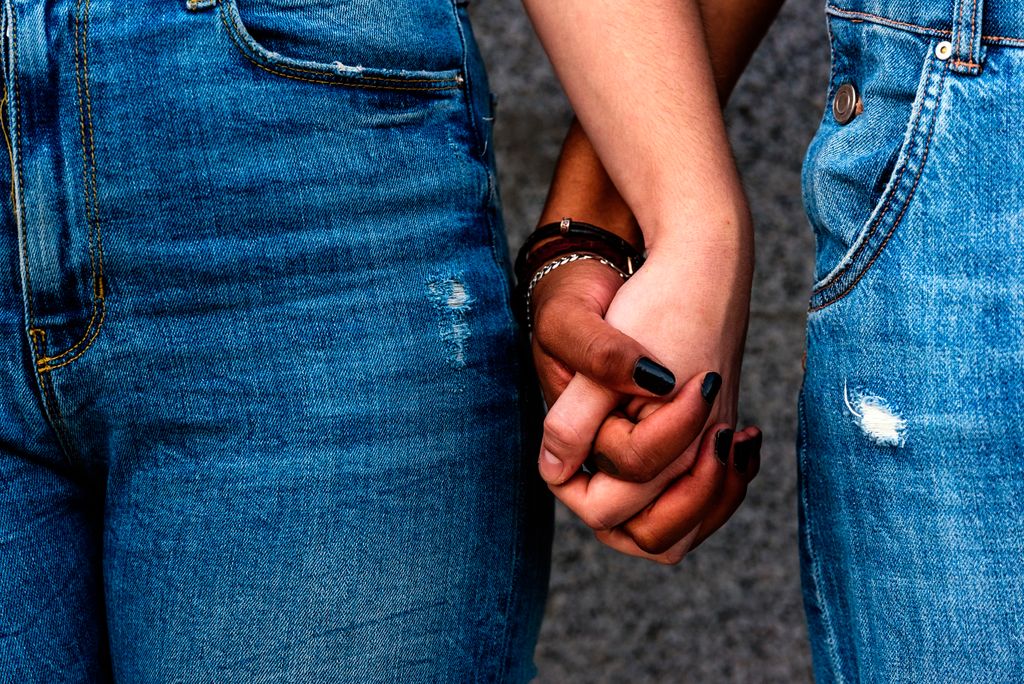Caring for LGBTQ+ Youth in the Juvenile Justice System.

When I was 17, I did what 17-year-olds do. I fell in love. Mushy, gushy, all-consuming love. But there were two problems. One, my new-found love and I were both girls from rural Kentucky. Two, the rule on the books at our residential public high school was that students who were dating could not live on the same floor. Though this doesn’t seem like a discriminatory policy on its face, the floors were single-gender; therefore, the policy affected only LGBTQ+ students.
By the spring of our senior year, my roommate and my partner’s roommate had effectively kicked us out due to rumors that we were dating. We couldn’t bring this up to the administration because the suspicion we were dating could be grounds for disciplinary action.
The residential director pulled the two of us into her office. “Ladies, it’s come to my attention that you two may be romantically involved with one another. You know if you are, then one of you will have to move and you’ll have your visiting privileges revoked. Are you dating?”
We did what we needed to do to stay together and in our community. “No ma’am, we aren’t.”
This summer, I relived this interaction over and over again. The fear, the guilt, the knowledge that I was inherently suspect, and that I had nowhere to turn. It startled me because I’d tucked this memory away, and I found it in an unlikely place.

I was working for the Department of Youth Services, the agency that handles juvenile justice for Massachusetts. My charge was to get a sense of how well the agency was doing in providing appropriate care to LGBTQ+ youth. Based on the myriad of staff, administrators, and youth that I spoke with, the policies I reviewed, the many meetings I attended, they’re doing a pretty good job. (Whether youth should be in the juvenile justice system is another question and outside the scope of this reflection.) Transgender youth are able to live in facilities that correspond with their gender identity. LGBTQ+ friendly posters hang in youth facilities. The library stocks books featuring LGBTQ+ characters and authors. Sex, sexuality, and gender data is collected in line with best practices.
One DYS policy keeps me up at night: youth in the system cannot date. Since the facilities are gender-segregated, in essence, LGBTQ+ youth can’t date. If youth who identify as or are assumed to be LGBTQ+ are in relationships with each other, they can be sent to separate facilities and separated from their friends and support system. In practice, this policy doesn’t stop with dating. Queer youth can be separated from their friends if staff believe they’re dating. Trans (and especially trans, bisexual) youth are held particularly suspect.
This policy especially affects the nearly 40 percent of DYS-involved girls who identify as LGBTQ+. LGBTQ+ girls are more than twice as likely to be involved in the juvenile justice system than their straight and cisgender counterparts. These girls are overwhelmingly Black and Latinx.
Why do so many LGBTQ+ youth, especially Black and Brown girls, become involved in the juvenile justice system? Queer and trans youth often face family rejection and are more likely to be homeless than their peers. LGBTQ+ youth are at increased risk of developing substance use problems and to be the trafficking. They’re more likely to be stopped by police, to be expelled from school, or to be arrested and convicted.
There’s no easy fix to the weight of stigma and systemic forces that land queer and trans youth into custody, and these same forces lead to discriminatory no-dating policies. Rewriting the policy to allow relationships between LGBTQ+ youth is out of the question. Relationships aren’t allowed between anyone in a DYS facility (including between staff members), and the culture underpinning these policies are held tightly.
I learned several tough public health lessons this summer. I sat in both the value of my lived experience for working in LGBTQ+ health, and the limits of my experience as a white adult who’s never been incarcerated. I wrestled with the frustration of imperfect policies and slow-to-change cultures. Finally, I started to come to terms with the weight that the work will never be finished and to take pride in it anyways.
Gray Babbs is an MPH candidate at the School of Public Health and a Public Health Post fellow.
Comments & Discussion
Boston University moderates comments to facilitate an informed, substantive, civil conversation. Abusive, profane, self-promotional, misleading, incoherent or off-topic comments will be rejected. Moderators are staffed during regular business hours (EST) and can only accept comments written in English. Statistics or facts must include a citation or a link to the citation.